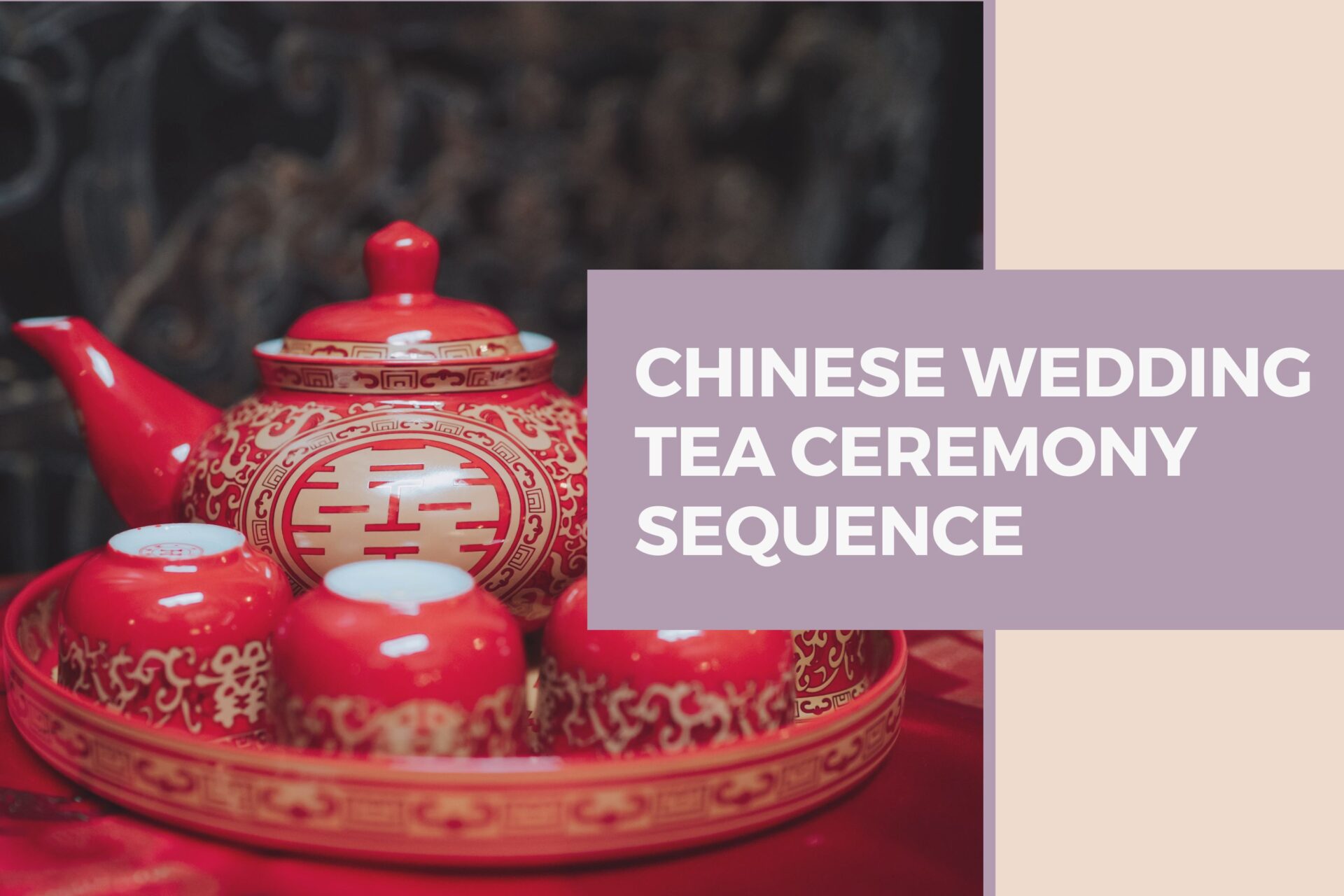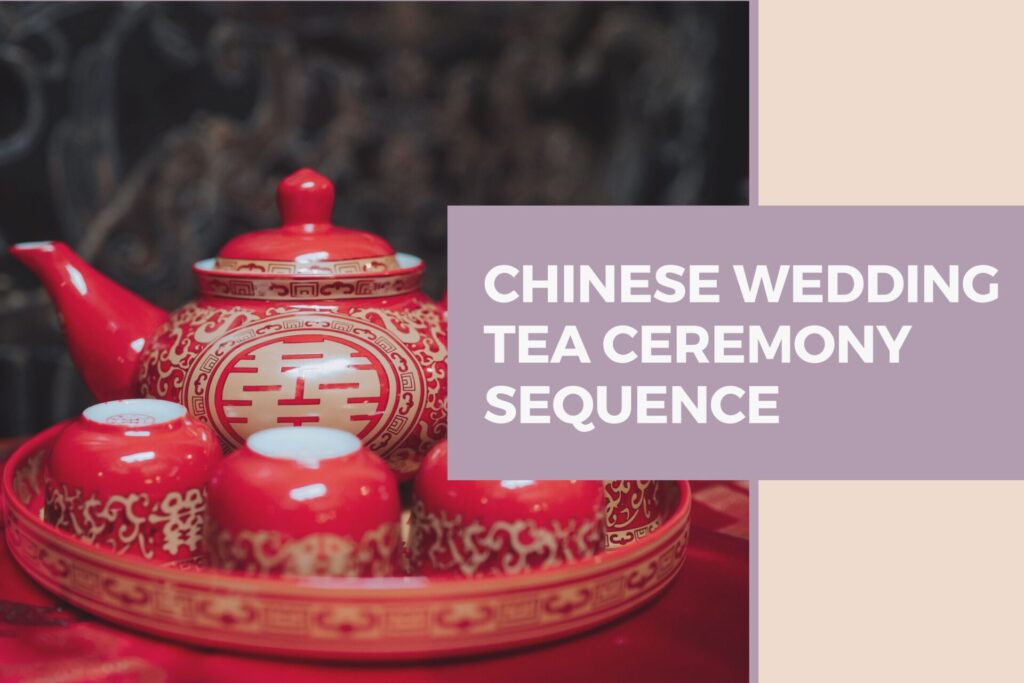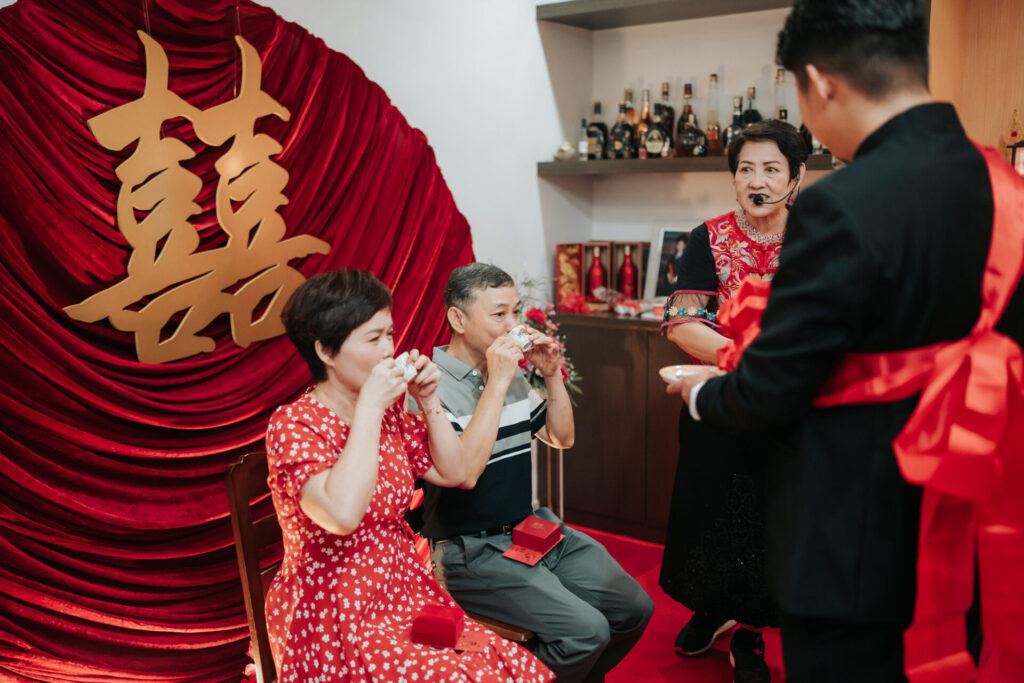
14 Dec Chinese Wedding Tea Ceremony Sequence: A Complete Guide to Traditions and Steps
Chinese Wedding Tea Ceremony Sequence: A Complete Guide to Traditions and Steps

The Chinese wedding tea ceremony is one of the most significant traditions in Malaysian Chinese culture. It’s a beautiful ritual that symbolizes respect, gratitude, and the blending of two families. This blog focuses on the Chinese Wedding Tea Ceremony Sequence, particularly the ranking of family members for tea serving, highlighting Malaysian-specific traditions.
Significance of the Tea Ceremony
The tea ceremony is not only a formal introduction of the bride and groom to each other’s families but also a chance for the couple to honor their elders. The act of serving tea signifies respect and gratitude, while blessings and gifts from the elders symbolize good luck and prosperity. In Malaysia, the ceremony often blends traditional and modern elements, reflecting both family values and practicality.

Serving tea, honoring elders, and receiving blessings – the beauty of a traditional Chinese wedding tea ceremony. 🏮🎎
Detailed Sequence of Tea Serving
In the Chinese Wedding Tea Ceremony Sequence, the order of serving tea is based on family hierarchy and seniority. Here’s a detailed breakdown for both the groom’s and bride’s sides:
Groom’s Side Tea Serving Sequence
- Grandparents
The groom’s paternal grandparents are served tea first, followed by maternal grandparents. If one set of grandparents is absent, the other takes precedence. - Parents
The groom’s parents are next in line. The father is served tea first, followed by the mother. - Godparents (if applicable)
If the groom has godparents, they are served tea after his biological parents. - Uncles and Aunts (Paternal Side First)
- Paternal uncles and their wives (伯父 and 伯母 for elder uncles; 叔父 and 婶婶 for younger uncles).
- Paternal aunts and their husbands (姑姑 and 姑丈).
- Elder Siblings
If the groom has elder brothers and sisters, they are served tea next. - Cousins (Optional)
Depending on family customs, elder cousins may also be served tea. - Peers and Younger Siblings
While elders are served tea, younger relatives (including siblings and cousins) may offer tea to the couple as a way of giving blessings.
Bride’s Side Tea Serving Sequence
- Grandparents
The bride’s maternal grandparents are typically served first, followed by paternal grandparents. - Parents
The bride’s father is served tea first, followed by her mother. - Godparents (if applicable)
Godparents, if present, are served after the bride’s biological parents. - Uncles and Aunts (Maternal Side First)
- Maternal uncles and their wives (舅舅 and 舅妈).
- Maternal aunts and their husbands (姨妈 and 姨丈).
- Elder Siblings
Similar to the groom’s side, the bride’s elder brothers and sisters are served tea next. - Cousins (Optional)
Elder cousins, especially those closely connected to the bride, may also be included. - Peers and Younger Siblings
As on the groom’s side, younger siblings or cousins may serve tea to the couple to express blessings.
Important Notes About Sequence
- Order by Seniority: The order is strictly based on hierarchy, starting from the eldest family members down to the youngest.
- Gender Consideration: In most cases, the male family members are served first, followed by their spouses.
- Flexibility: While the traditional order is preferred, some families may adapt it based on specific needs, such as accommodating elders with mobility issues.
Additional Tips for the Tea Ceremony
- Preparation
Ensure the tea set, sweet tea (e.g., longan and red date tea), and chairs for the elders are ready before the ceremony begins. - Create a Guest List
Prepare a complete list of guests attending the tea ceremony in advance. This will save time during the event and avoid confusion about who should be served next. - Assign a Helper
Designate a trusted family member or friend to read out the names and relationships in the correct order during the tea ceremony. - Practice Addressing Titles
Familiarize yourself with the proper titles for each family member (e.g., 伯父 for elder uncles or 舅舅 for maternal uncles). Using the right terms reflects respect. - Photograph the Moment
A professional photographer or videographer can help preserve these cherished memories. - Communicate with Elders
Discuss customs like kneeling or sequence adjustments in advance.
Conclusion
The Chinese Wedding Tea Ceremony Sequence is an essential part of Malaysian Chinese weddings. It emphasizes respect, gratitude, and family hierarchy while blending tradition with practicality. Whether kneeling or bowing, the gesture reflects the couple’s sincerity and gratitude. Preparing a guest list and assigning helpers ensures the ceremony runs smoothly and honors every family member.
This guide offers a complete overview of the Chinese Wedding Tea Ceremony Sequence, helping you honor your loved ones while celebrating a beautiful union.
Check out our Instagram & Facebook Page for more photos.
Contact us if you need further information.

